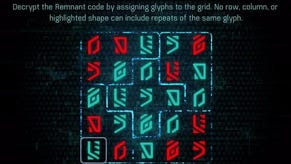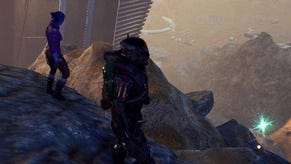Performance Analysis: Mass Effect Andromeda
Digital Foundry's initial tests on PS4 and Xbox One versions of the game.
The latest episode of gaming's favourite space opera is mere days away from general release - and it's safe to say that the buzz surrounding Mass Effect Andromeda is mixed. As a game, acknowledging the issues its scope may bring, the response from Eurogamer has been positive. However, PC and Xbox One owners sampling the beginning missions via Origin/EA Access have encountered a number of glitches, bugs and issues that are receiving plenty of attention. For this article, our attention is on performance and scalability between PS4 and Xbox One, where BioWare has had to work a little harder to scale visuals between the two consoles' different levels of GPU power.
After the success of Dragon Age Inquisition, BioWare has chosen to continue development on EA's internal Frostbite engine, transitioning away from the Unreal Engine 3 powerhouse that formed the technical underpinnings of the last-gen Mass Effect trilogy. It's a good match: with Andromeda, there's a stronger emphasis on larger, more open worlds - bread and butter for Frostbite - while at the same time tapping into the engine's strong visual feature set. On top of that, BioWare is able to utilise the latest iteration of the engine. Of course, the brilliant physically-based lighting seen in Battlefield 1 and Star Wars Battlefront is implemented here, but new features - like Frostbite's full HDR support - are included in an EA title for the first time.
However, there is a curious sense that some aspects of the presentation are somewhat at odds with Frostbite's state-of-the-art feature set. Animation in particular looks very stilted, and almost last-gen in nature. Applying the very latest advances in motion capture (particularly facial) is going to be tough when you can define so many aspects of your character's appearance, but there's still a general sense that it's lacklustre across the game. The same can be said for character modelling as well.
Going into technical specifics, first impressions suggest a similar roll-out of the Frostbite tech on PS4 and Xbox One, but predictably, resolution counts differ. We can't rule out an implementation of DICE's dynamic scaling technology, but the pixel counts early on suggest two different profiles for each version of the game. Actual gameplay follows a set pattern of operating at full HD on PlayStation 4, while Xbox One runs at 900p - similar to what we saw in BioWare's Dragon Age Inquisition. The Microsoft platform presents a little more softly in higher contrast areas, but in common with many 1080p/900p divides, there's little to distract in terms of overall image quality.
The rendering workload increases significantly on engine-driven cut-scenes though. At this point, PS4 drops to 900p, while Xbox One descends still further to something in the region of 1344x756. That's a 10 per cent boost over 720p, but still not particularly great in motion, with more visible pixel-popping. Curiously, some cut-scenes actually resolve at full 1080p on both systems - but on close inspection, these turn out to be video sequences that run while game data streams into memory in the background.
Performance is generally in line with prior BioWare titles. Frame-rates are capped at 30fps and a customised adaptive v-sync solution is in play when the engine can't hit its performance target. For PS4, this actually looks very much like Mass Effect's profile on Xbox 360 - it's generally v-synced, but the framebuffer can flip a little over schedule, resulting in a mostly unnoticeable tear at the top of the screen. Xbox One sees the window for flipping in the new window expanded somewhat, resulting in tearing that is able to manifest anywhere in the top third of the screen. This is all about reducing latency: why wait anything up to 15ms for the next screen refresh is the frame is ready to go?
If the new frame still isn't complete within the expanded frame-time window BioWare allows, performance stalls until the next screen refresh, causing noticeable judder on both systems. Adding further to a sense of unevenness is how PlayStation 4 seems to occasionally drop a proper 30fps cadence with pockets of incorrect frame-pacing. Both versions can drop frames in the same error with mostly similar results, but based on like-for-like testing, PS4 is ever-so-slightly smoother, while Xbox One also has minor issues with more visible screen-tear. Cut-scenes also have visible judder, not helped by extended frame-time pauses as the action cuts from one viewpoint to another - a situation that is mirrored on both consoles. In short, for the majority of the experience, performance hits the target, but we could really use an optimisation push to iron out the remaining kinks.
We'll have a more fully featured look at the game soon, where we'll be taking a look at the PC game, and we'll also be checking out Mass Effect Andromeda on PlayStation 4 Pro, where we should have the option of an 1800p checkerboard 4K mode, along with enhancements for 1080p displays too.









